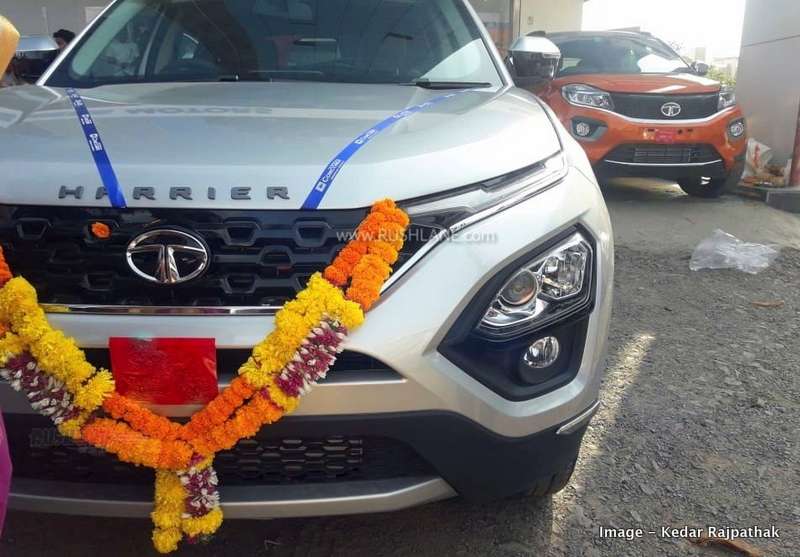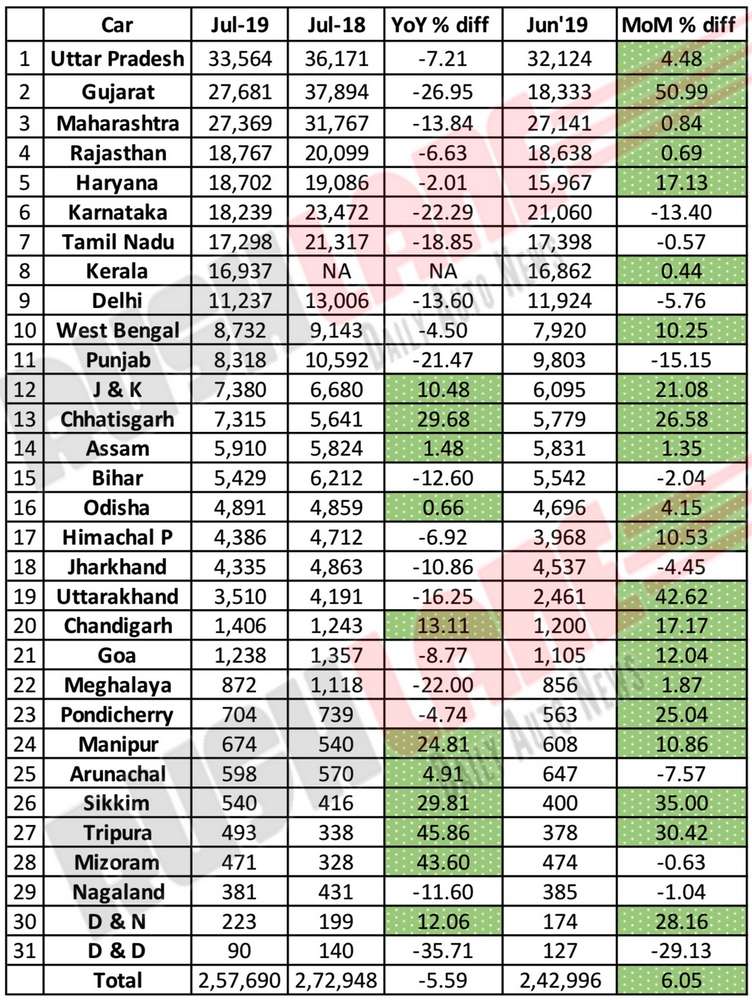
Vehicle registration data for July 2019 released by Federation of Automobile Dealers Associations (FADA) highlights the continued slowdown in the auto sector. Total car sales have come down from 2,72,948 units in July 2018 to 2,57,690 units in July 2019, which translates into YoY loss of -5.59%.
However, the negative trend appears to be reversing, as MoM growth is 6.05%. Last month in June, total sales were 2,42,996 units. In terms of YoY growth, quite a few states have bucked the trend by registering positive growth.
These include Tripura (45.86%), Mizoram (43.60%), Sikkim (29.81%), Chhattisgarh (29.68%), Manipur (-24.81%), Chandigarh (13.11%), D&N (12.06%), J&K (10.48%), Arunachal Pradesh (4.91%), Assam (1.48%) and Odisha (0.66%). In terms of MoM growth, there are only ten states that have registered negative growth. Top contributors in car sales include Gujarat (50.99%), Haryana (17.13%), West Bengal (10.25%), J&K (21.08%) and Chhattisgarh (26.58%).

Another positive development for Passenger Vehicles (PVs) is that average inventory levels have come down to 25-30 days. This is quite close to 21 days, as recommended by FADA. Reduced inventory levels improve profitability for dealerships, which is key to their survival in these challenging times.
According to FADA, the slight improvement in car sales, as seen in positive MoM growth is due to several reasons. One is the revival of monsoon in most parts of the country. While June was mostly dry, increased rainfall activity in July and August has boosted consumer sentiments. Fuel prices have also stabilized, which is another positive development for the auto sector.
FADA has stated that the liquidity situation is expected to improve in the future with capital infusion in banks and NBFCs. After a meaningful meeting with Finance Minister, FADA is expecting some crucial announcements such as temporary GST reduction and attractive scrappage policy. Prime Minister’s announcement that IC vehicles and electric vehicles (EVs) can co-exist has been welcomed by FADA.
FADA has listed potential problems such as a weakening economy and purchase postponement by customers. Another thing to worry is the recent floods, some of which have occurred in states with significant auto sales.
However, FADA’s long term outlook for the auto sector is positive, expected to contribute 12% to India’s GDP in 2026. Expected to grow 50% by 2026, the auto sector will play a crucial role in achieving the government’s vision of becoming a USD 5 trillion economy by 2025.

